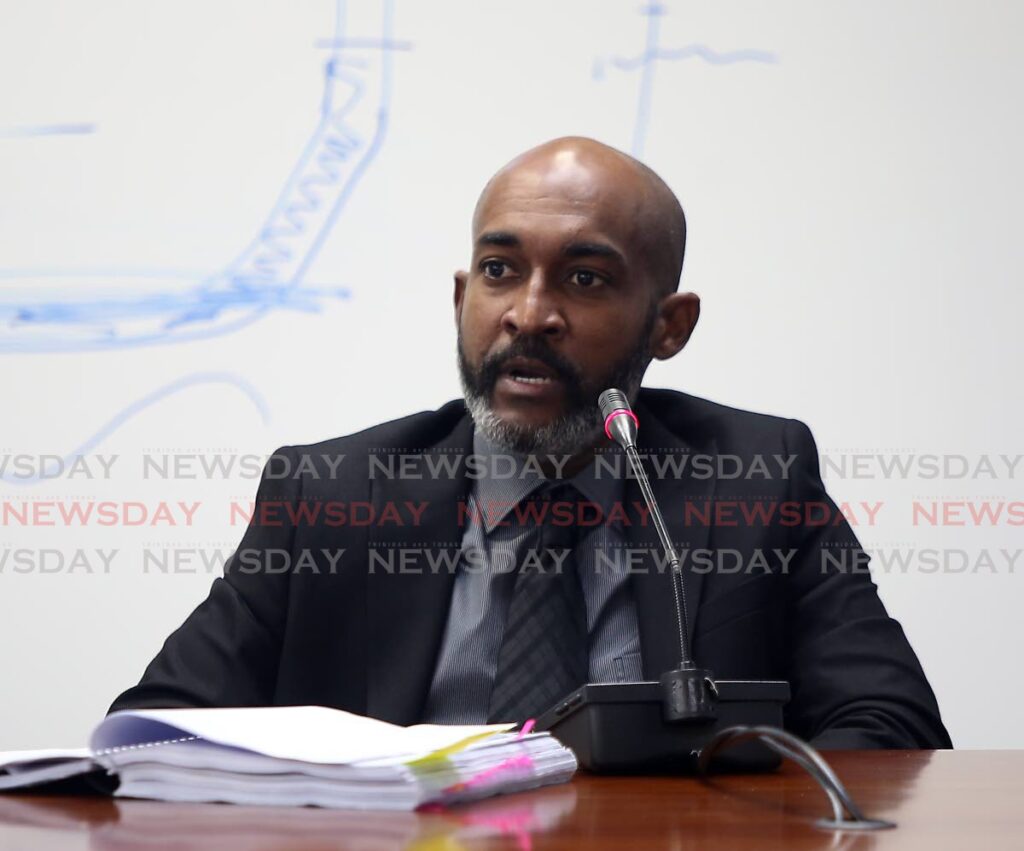Dive supervisor says a rescue would be very complex

ANY rescue of four divers trapped in an undersea pipeline would have included several steps and been complex, heard the Commission of Enquiry into the February 25 tragedy at Paria Fuel Trading Company Ltd facilities at Pointe-a-Pierre when the commission sat on Friday at the International Waterfront Centre, Port of Spain.
Rolph Seales of Heritage Petroleum Company Ltd, gave a blow-by-blow narrative of what a rescue attempt would have entailed.
While repairing a pipeline, Fyzal Kurban, Kazim Ali Jr, Rishi Nagassar, Yusuf Henry and Christopher Boodram were sucked inside by a surge of water pressure known as a Delta P, with Boodram alone escaping alive and his four colleagues dying. The CoE, under British KC Jerome Lynch, is probing the accident and whether sufficient was done to rescue the men.
Seales is Heritage's diving operations supervisor and client representative, assigned to Kenson which works for Paria.
The commission heard Seales was Canadian-certified, with 25 years experience in marine diving operations including 22 years at Petrotrin of which 18 years was as a commercial diver.
While experienced in general diving, he had no experience nor qualification in supervising emergency diving.
He said to communicate by line-tugs around the bend between the vertical and horizontal parts of the pipeline, any rescue would need a diver posted before the bend and one after.
One would enter the pipeline head first and the other feet first, he said. "There is a risk putting him in head first."
Seales said such a diver would be hoisted above an extension (riser) atop the vertical part of the pipeline and then let down to the bottom of the pipeline, being lowered roughly 30 feet in all.
He said, "The diver could pass out." Lynch remarked, "It's an unenviable position."
Lynch said each rescue diver would have to be equipped with an umbilical cord, communications device, rope and lights.
Seales said other divers would monitor how the umbilical cords passed into the habitat (that cupped the top of the riser) and then passed over and into the riser.
Lynch remarked, "That's the kind of plan you'd be looking at. What you're saying to me is that this is possible: You need a man in the water outside the habitat, you need a man inside the habitat,
to ensure the cable is going in, you need another man at the bend, you need one at the (horizontal) pipe.
"What you're saying is that it's not impossible to do but it's difficult to do." Seales agreed.
Lynch said, "And you need the appropriate number of divers or personnel who can be relied upon to carry out that task. And a willingness to do so."
Lynch asked if this conversation had ever been held with Seales, who replied no.
Counsel for Ali's family, Prakash Ramadhar, in cross-examination, asked if Seales would wish to be rescued if he were ever trapped in a pipeline. Seales said he'd not wish anyone to risk their life for him. Paria counsel Gilbert Peterson reckoned any rescue would need five divers. Seales said a penetration dive like this needed planning, mitigations and controls.
Rather than a formal rescue plan, Seales said, "It was more of a personal effort."
He said any diver in a 30-inch pipeline would have only leeway of four inches on each side of him. "To navigate in that space would be a challenge."
Seales again said a diver suspended for 30 feet could pass out, and also risk flooding of his helmet. He added, "There's still a potential for a second Delta P. That's a consideration."
He said a diver entry to a pipeline feet first would be challenging.
"You are going down the vertical section. When you reach the horizontal you navigate the tube turn. That might pose a little challenge, with equipment on.
"He'd have to turn over, on all-fours. So you'd have to have to be on your belly now, in the horizontal section. You'd need to be on your stomach to be able to travel along the pipeline."
Seales said such a diver would meet obstacles feet first. "Whatever items you met you can't leave them. You'd have to clear them first." Peterson said four scuba tanks were in the pipeline.
Peterson asked if Seales would send in a diver, in view of all those considerations. Seales replied no. He agreed with Peterson that any injuries could further complicate a rescue.
Peterson said one could attract criminal liability for authorising and sending persons to their death. He asked if Seales had factored in the trapped men's possible response to rescuers.
Seales said, "He's in survival mode now. He could be erratic. He could be doing whatever is necessary for him to get out of the pipeline.
"You can be attacked. He might try to take your gear."

Comments
"Dive supervisor says a rescue would be very complex"